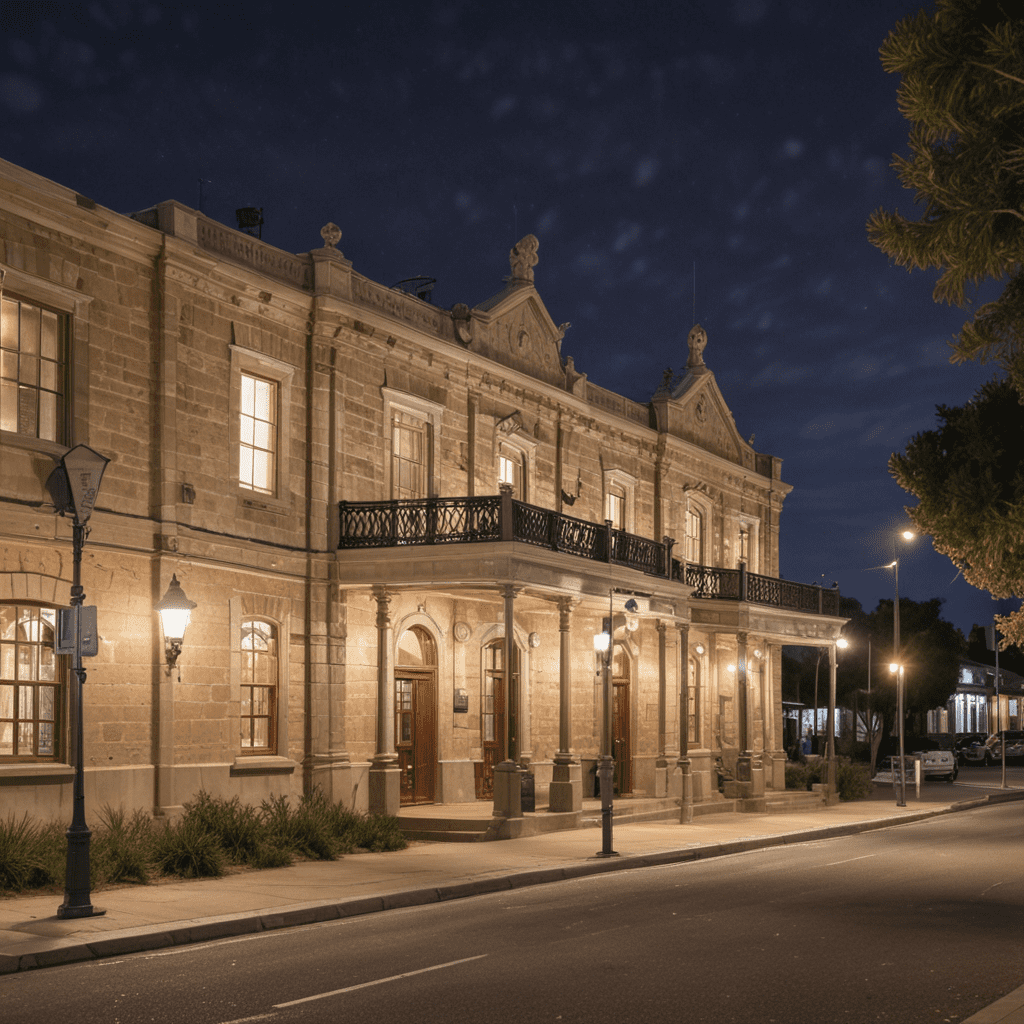
Discovering the History of the Ceduna National Trust Museum
1. Introduction: The Importance and Allure of Local History Museums
Nestled in the heart of Ceduna, South Australia, the Ceduna National Trust Museum stands as a captivating repository of local history. This beloved institution has played an indispensable role in preserving and showcasing the rich cultural heritage of the region, offering visitors a captivating glimpse into the past that has shaped the present.
Local history museums, such as the Ceduna National Trust Museum, hold immense significance within their communities. They serve as guardians of collective memories, connecting residents with their shared heritage and fostering a sense of place and belonging. These museums provide a platform for preserving and interpreting artifacts, documents, and stories that would otherwise be lost to time.
2. The Early Beginnings: The Community’s Passion for Preservation
The origins of the Ceduna National Trust Museum can be traced back to the passionate efforts of a group of dedicated community members in the 1960s. Recognizing the importance of safeguarding their region's historical legacy, they established the Ceduna National Trust Branch in 1964.
Guided by a shared vision, these individuals embarked on a mission to collect and preserve objects that reflected the unique character and history of Ceduna. The museum's humble beginnings took root in a small room at the local school, where the first collection of donated items found a temporary home.
3. The Journey of a Thousand Objects: Collecting and Curating the Museum
Over the years, the museum's collection grew steadily through the generous contributions of local residents and organizations. Artifacts ranging from domestic items to farming equipment, photographs to personal diaries were carefully acquired and cataloged.
The museum's curators meticulously documented the provenance and significance of each object, ensuring that the stories behind them were preserved for future generations. This ongoing process of collection and curation has transformed the museum into a repository of immense historical value, offering a comprehensive narrative of Ceduna's past.
4. Pioneers and Local Legends: Unveiling the Stories Behind the Artifacts
The objects housed within the Ceduna National Trust Museum are not mere relics of the past; they are tangible links to the lives of the people who shaped the region. Each artifact carries a unique story, shedding light on the challenges, triumphs, and everyday experiences of Ceduna's pioneers and local legends.
Through the museum's displays and educational programs, visitors can journey back in time and encounter the characters who played pivotal roles in the development of Ceduna. From courageous explorers to resilient settlers, from Indigenous custodians to community leaders, these stories illuminate the human tapestry that has woven the fabric of Ceduna's history.
5. A Window to the Past: Exploring the Museum’s Special Exhibitions
In addition to its permanent collection, the Ceduna National Trust Museum regularly hosts special exhibitions that delve deeper into specific themes or periods in the region's history. These exhibitions often feature guest curators, showcasing unique perspectives and bringing new insights to the museum's offerings.
Past exhibitions have explored topics as diverse as the role of women in Ceduna's development, the impact of the whaling industry, and the experiences of Indigenous Australians in the region. Through these special exhibitions, the museum continues to enrich its visitors' understanding of Ceduna's rich and multifaceted history.
6. The Museum as an Education Hub: Nurturing a Love for Local Heritage
The Ceduna National Trust Museum serves as an invaluable educational resource for the community, fostering a deep appreciation for local history and heritage. Through educational programs tailored to school groups, the museum brings the past to life, sparking curiosity and inspiring future generations.
Interactive exhibits and hands-on activities engage students, allowing them to experience history in a tangible way. The museum's dedicated educators guide students through the museum's collection, highlighting the stories and significance behind each artifact. These programs play a vital role in nurturing a lifelong love for local heritage and instill a sense of pride in the community's shared past.
7. Preserving Indigenous Culture: Honoring the Custodians of the Land
Ceduna is situated on the traditional lands of the Wirangu and Kokatha people, and the Ceduna National Trust Museum recognizes the importance of preserving and honoring Indigenous culture. The museum's collection includes a significant number of artifacts that showcase the rich cultural traditions and artistic expressions of the region's First Nations people.
The museum works closely with local Indigenous elders and community groups to ensure that Indigenous perspectives and experiences are accurately represented. Through exhibitions, storytelling sessions, and cultural workshops, the museum provides a platform for Indigenous voices to be heard and celebrated.
8. A Vital Community Resource: The Museum’s Role in Local Identity
Beyond its educational and cultural significance, the Ceduna National Trust Museum is an essential community resource that plays a vital role in shaping local identity. The museum provides a sense of place and belonging for Ceduna residents, connecting them to their shared history and shared experiences.
The museum hosts community events, workshops, and lectures, bringing people together to explore different aspects of local history and culture. It serves as a gathering place for residents to celebrate their heritage, share their stories, and forge new connections within the community.
9. Facing Challenges and Embracing Growth: The Museum’s Adaptation
Like many institutions, the Ceduna National Trust Museum has faced its share of challenges over the years. However, the museum has consistently adapted and evolved to meet the changing needs of the community.
In recent years, the museum has undergone a major renovation to enhance its facilities and improve accessibility. The museum has also embraced digital technologies to reach a wider audience and offer new ways of engaging with the collection. Through virtual tours, online exhibitions, and social media platforms, the museum continues to share the stories of Ceduna's past with the world.
10. Conclusion: The Enduring Legacy of the Ceduna National Trust Museum
The Ceduna National Trust Museum stands as a testament to the enduring power of local history and the dedication of the community to preserving its heritage. The museum's collection of artifacts, stories, and traditions provides a valuable window into the past, inspiring a deeper appreciation for the region's unique character.
As the museum continues to grow and adapt, it will undoubtedly remain a cherished institution within the Ceduna community, ensuring that the stories of the past continue to resonate in the present and inspire generations to come.
FAQ:
Q: When was the Ceduna National Trust Museum founded?
A: The Ceduna National Trust Branch was established in 1964, and the museum's collection began soon after.
Q: What types of artifacts are included in the museum's collection?
A: The museum's collection includes a wide range of artifacts, from domestic items and farming equipment to photographs, diaries, and Indigenous cultural objects.
Q: Does the museum offer educational programs for school groups?
A: Yes, the museum offers educational programs tailored to school groups, providing interactive exhibits and hands-on activities that bring local history to life.
Q: How does the museum preserve and honor Indigenous culture?
A: The museum works closely with local Indigenous elders and community groups to ensure that Indigenous perspectives and experiences are accurately represented through exhibitions, storytelling sessions, and cultural workshops.
Q: How has the museum adapted to meet the changing needs of the community?
A: The museum has undergone renovations to enhance its facilities and accessibility and has embraced digital technologies to reach a wider audience through virtual tours, online exhibitions, and social media platforms.


